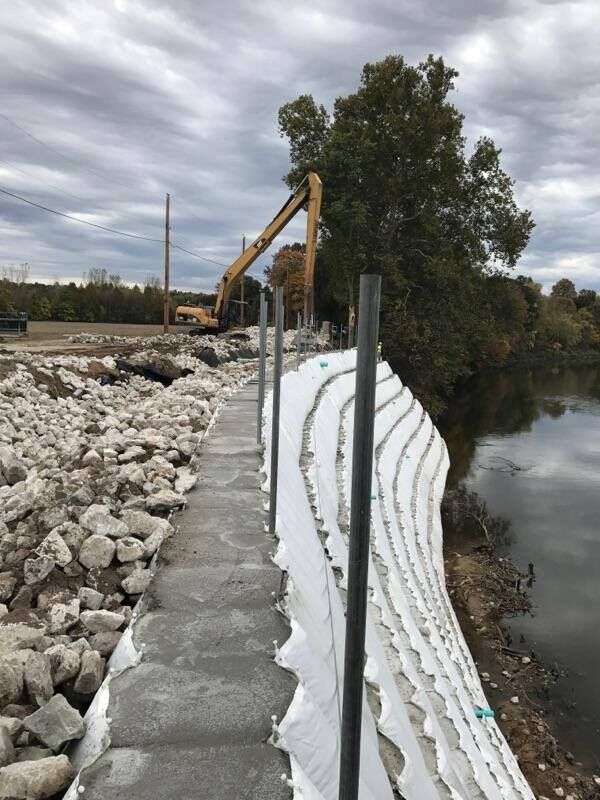Installing a retaining wall on a river bank is a strategic move with numerous benefits, impacting both the immediate environment and the broader ecological system. Let’s dive into these advantages:
- Erosion Control
First and foremost, a retaining wall plays a crucial role in preventing erosion. River banks, constantly exposed to flowing water, are susceptible to erosion. This erosion can lead to loss of land, damage to property, and can even destabilize the river’s course over time. A retaining wall acts as a barrier, absorbing and deflecting the energy of the water, thus protecting the river bank from being worn away.
- Flood Management
Another key benefit is flood management. When rivers overflow, they can cause significant damage to nearby areas. A well-designed retaining wall can help contain the river’s waters within its banks, reducing the risk of flood damage to nearby homes and ecosystems.
- Improved Water Quality
You might not think it at first, but retaining walls can actually contribute to improved water quality. By reducing erosion and sediment runoff into the river, these walls help maintain clearer and cleaner water. Sediment can carry pollutants and disrupt aquatic life, so controlling it is essential for a healthy river ecosystem.
- Enhanced Aesthetics and Usability
On a more human-centered note, retaining walls can enhance the aesthetic appeal and usability of a river bank. They provide a clear, defined edge to the river, which can be landscaped and used for recreational activities like walking, fishing, or simply enjoying the view.
- Increased Property Value
For property owners, this can be a big deal. A well-constructed retaining wall can increase the value of a property. It not only adds to the visual appeal but also assures potential buyers that the property is protected against erosion and flood risks.
Also read How to build a retaining wall on a river bank?
- Habitat Creation
In a fascinating twist, these walls can create new habitats for wildlife. The structure of the wall itself can become a home for certain species, and the stabilized bank can support a more diverse range of plant and animal life.
- Long-Term Cost Savings
Though the initial investment might be significant, in the long run, retaining walls can save money. By preventing erosion and flood damage, they reduce the need for costly repairs and maintenance on the river bank and nearby structures.
- Community Safety
Last but definitely not least, retaining walls contribute to the safety of the surrounding community. By controlling erosion and floods, they protect homes, roads, and other infrastructure from damage, ensuring a safer environment for everyone.
Conclusion
In short, installing a retaining wall on a river bank isn’t just about holding back dirt or water. It’s about creating a safer, more stable, and more beautiful environment for both people and wildlife. The upfront costs and planning are certainly something to consider, but the long-term benefits speak volumes about the importance of such structures in managing our natural waterways.
Q1: What is a retaining wall, and why is it used on river banks?
A: A retaining wall is a structure designed to restrain soil or rock from a slope. On river banks, it’s used to prevent erosion, manage flooding, and stabilize the area.
Q2: How does a retaining wall help prevent erosion?
A: Retaining walls act as a physical barrier that absorbs and deflects the energy of water, reducing the impact on the river bank and thus preventing erosion.
Q3: Can retaining walls help with flood control?
A: Absolutely! By containing the river’s waters and providing a barrier, retaining walls can significantly reduce the risk of flooding in nearby areas.
Q4: Are there environmental benefits to installing a retaining wall?
A: Yes, they contribute to better water quality by reducing sediment runoff and can create new habitats for wildlife.
Q5: How do retaining walls affect the appearance and value of a property?
A: A well-designed retaining wall enhances the aesthetic appeal of the riverfront and can increase property value by ensuring land stability and flood protection.
Q6: What materials are commonly used for constructing retaining walls on river banks?
A: Common materials include concrete, stone, and specially designed blocks. The choice depends on the specific environmental conditions and the desired aesthetic.













